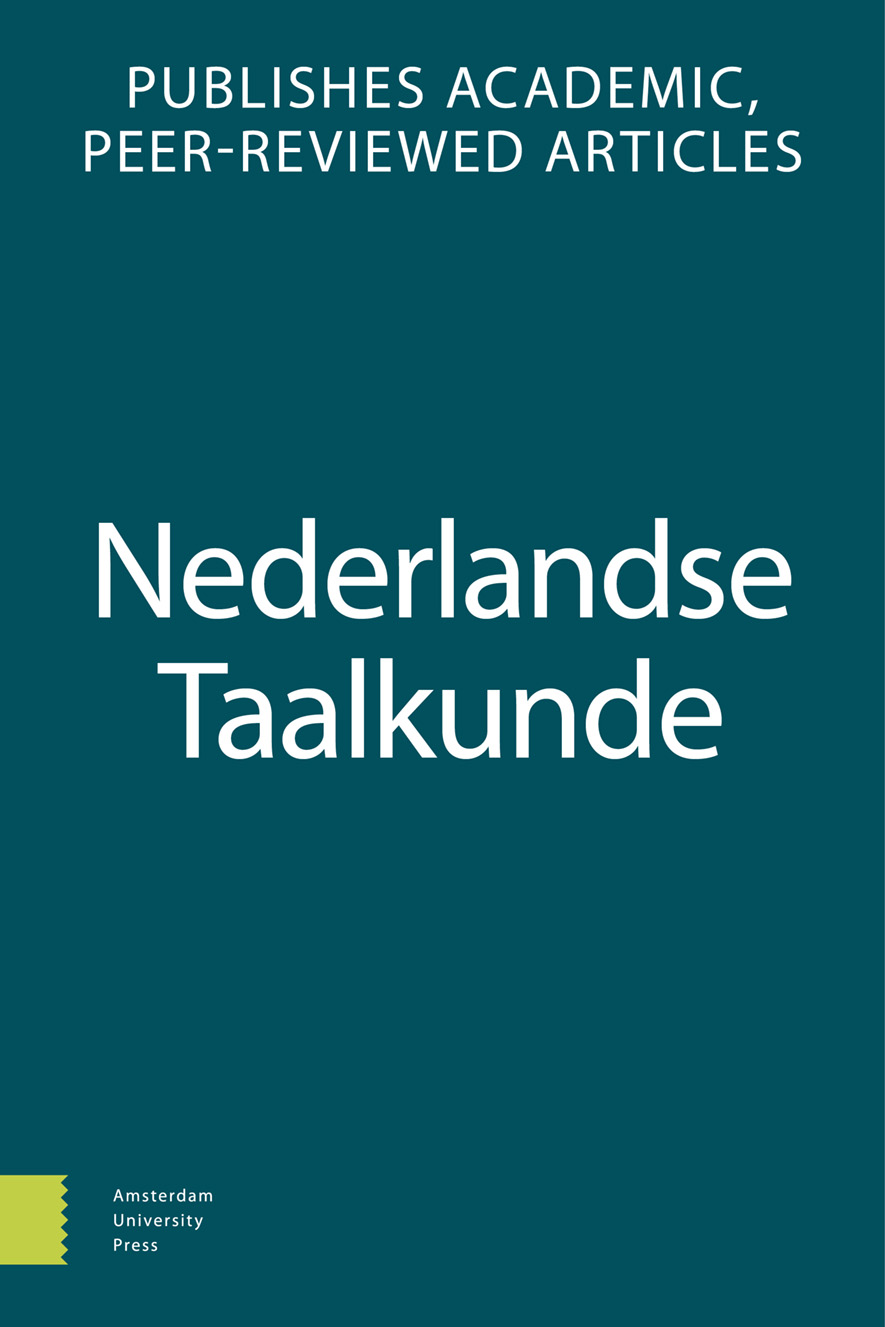- Home
- A-Z Publicaties
- Nederlandse Taalkunde
- Previous Issues
- Volume 29, Issue 2, 2024
Nederlandse Taalkunde - Volume 29, Issue 2, 2024
Volume 29, Issue 2, 2024
Taal:
Nederlands
- Artikel
-
-
-
Experimenteel clusteren
Meer MinderDoor Anne RenzelAbstract This study presents a psycholinguistic approach to the complex phenomenon of word order variation in Dutch where speakers can freely choose the position of the past participle and the auxiliary verb in bipartite final verb clusters. (1) Jeroen beweert dat Bregje de hele middag heeft geslapen. (2) Jeroen beweert dat Bregje de hele middag geslapen heeft. ‘Jeroen claims that Bregje has slept all after Read More
-
-
-
-
Over de structuur van uitdrukkingen als hardop en languit
Meer MinderDoor Ina SchermerAbstract In this article I argue that A+P adverbs like hardop ‘aloud’ and languit ‘at full length’ are words composed of an adjective (hard ‘hard’, lang ‘long’) and an intransitive adposition (a particle or sometimes a locational adposition) functioning as a suffix. This description differs from Corver’s (2022), according to whom the expressions are adpositional phrases. His analysis is meant to illustrate six points of view that have beco Read More
-
-
-
Een multivariate analyse van de diachronie van het ge-prefix bij het voltooid deelwoord van perfectiva simplicia in het Middelnederlands
Meer MinderAuteurs: Tuur Schockaert & Freek Van de VeldeAbstract Middle Dutch sports a number of verbs whose past participle occurs without the characteristic ge-prefix, because of their inherently perfective aspect: bliven (‘stay’), brengen (‘bring’), comen (‘come’), liden (‘(under)go’), vinden (‘find’) and werden (‘become’). This article presents a multivariate analysis of a corpus study on 2683 tokens of these Middle Dutch participles. It confirms earlier hypotheses on the Hollandi Read More
-
- Squib
-
-
-
Die/diens of hen/hun? Non-binaire voornaamwoorden in het Nederlands
Meer MinderDoor Hielke VriesendorpAbstract This paper maps the usage of third person singular pronouns to refer to non-binary referents in Dutch, through a survey of largely inclusivity-oriented speakers of Dutch (N=702). Self-reported production data show that speakers often combine pronouns from two separate pronominal systems (i.e. the personal pronoun die with its possessive counterpart diens and the personal pronoun hen and its other Read More
-
-
- Boekbesprekingen
Most Read This Month
Article
content/journals/13845845
Journal
10
5
false
nl

Most Cited Most Cited RSS feed
-
-
Goed of fout
Auteurs: Hans Bennis & Frans Hinskens
-
- More Less

